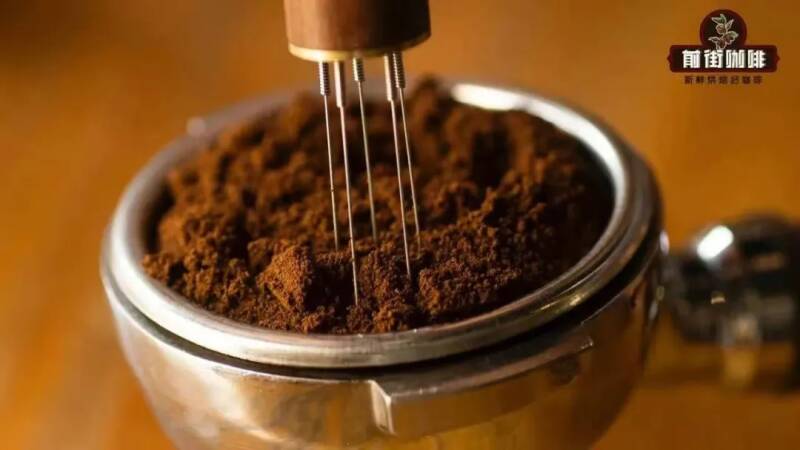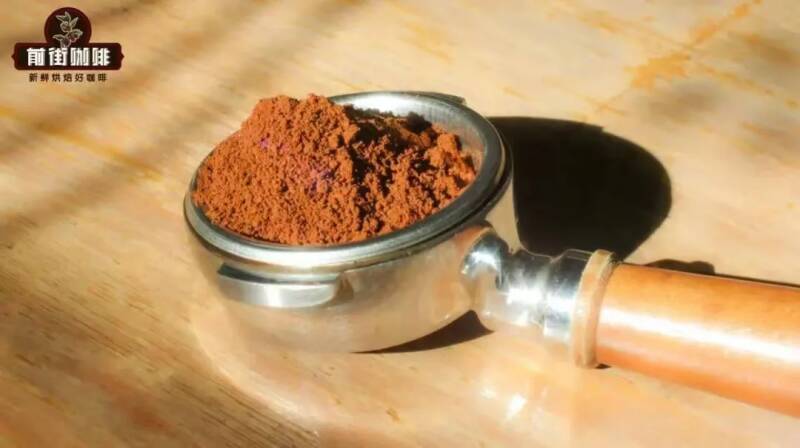Why do coffee shops make concentrates? How good or less good is espresso fat? Why is concentration difficult to adjust on rainy days?
To be reasonable, Qian Jie believes that the most painful thing in the daily work of a barista is the routine every morning-blending concentrated. If there is anything more painful than this, it must be the concentration of tune on a rainy day. Because if you don't pay attention, you will be full of concentration and drink until you are afraid. Some friends expressed that they did not understand this and thought it was completely unnecessary to do so. Because as long as the concentrated extraction is like hand-brewed, maintaining the same amount of powder, water temperature, liquid weight, and grinding degree, the coffee obtained today should not be much different from the previous day.
Indeed, it is true to say this. However, the probability that it will taste similar to the day before is not very high. The extraction of espresso coffee is affected by many factors, not just one day apart, but it may only take a few hours to change the taste extracted by the same parameter. Otherwise, why does the job of condensing still exist in every coffee shop today?
The reason why the extraction of espresso coffee is so strict mainly comes from its unique extraction method-pressure extraction. At pressures of up to 9 bar, the substances in the coffee can be quickly extracted. However, due to the short extraction time, each extraction parameter is very extreme. The water temperature is very high and the grinding is very fine... This leads to the fact that when there are slight changes in the coffee beans or the surrounding environment, the taste of the coffee will be affected.
Changes in the state of beans When the roasting is completed, the state of the coffee beans changes every moment. This change mainly results from the emission of gas from the coffee beans. As we all know, coffee beans produce a lot of carbon dioxide during roasting. The deeper the beans are roasted, the more carbon dioxide will be produced. This carbon dioxide will be continuously released as the baking is completed, and our extraction is affected by carbon dioxide. Because of the presence of these carbon dioxide, the dissolution and release of flavor substances in coffee will be suppressed to a certain extent.
With the same extraction parameters, the higher the carbon dioxide content in the coffee beans, the less coffee substances will be extracted, because carbon dioxide will hinder the water from dissolving flavor substances. If you use freshly roasted coffee beans to extract espresso, Qianjie believes it should not be difficult to find this situation:
When we use freshly roasted coffee beans to make espresso, although the concentrate produced has very rich oil, the taste of the coffee is usually weak, thin, and the aroma is not obvious enough. The rich oil will quickly dissipate, agglomerating and hardening. In this case, carbon dioxide emissions replace the release of flavor substances, which affects the taste of coffee.
But when the beans are left behind for a while, the extracted coffee not only has a very rich aroma, but also has smooth and delicate oil. So if we want to extract similar delicacy from fresh beans, we need to adjust the parameters to achieve it.
The more and less carbon dioxide will also have another effect, which is the speed of launching. Since the coffee powder encounters water during the extraction process, carbon dioxide is released instantly. When they are released, they will form bubbles, and the kinetic energy of the bubbles overflowing upwards will produce a reaction force, which will hinder the penetration of hot water. The same amount of water will take more time to penetrate through the coffee powder layer.
Since the exhaust of coffee beans is carried out all the time, we need to constantly adjust the parameters during extraction based on the current state of the coffee beans. Only in this way can we ensure that the coffee extracted every day has the same taste. This is the most important factor when adjusting concentration every day. (Also because different batches of coffee beans were replaced)
Weather and environmental changes The weather will also affect the extraction of espresso coffee, which is something that Qianjie often brings water to share. Concentration on rainy days is always more difficult to adjust than on sunny days, because rainy days make the humidity of the environment higher and the air is filled with active water molecules. Not only will coffee beans be more susceptible to moisture, but the ground coffee powder will also be more likely to agglomerate. If a large amount of agglomerated coffee powder is present when filling the cake, it will be very easy to promote the formation of channels during the extraction process. The channel effect will cause the water to concentrate in a certain place, causing uneven extraction to occur, and the coffee will become bitter and sour, with conflicting and abrupt tastes.

Not only that, the drop in atmospheric pressure will also affect the pressure of the coffee machine, making it impossible for the coffee machine to use full force extraction and concentration. Therefore, espresso in rainy weather is always more difficult to drink because all parameters are not up to standard. Because of this, we need to adjust this parameter even more so that the concentration on rainy days can also have the delicious taste on sunny days.
The change in grinding degree is ultimately the change in grinding degree! Although the same bean grinder grinds the same coffee beans with the same scale, the size of the grains ground every day will also vary.

The main reason for the difference comes from the wear of the cutter head. It is not difficult to find that the grinding scale number of the bean grinder has been continuously decreasing. The reason is that the cutter heads of the bean grinder will continue to wear out after multiple uses, and the spacing between the cutter heads will become larger and larger. Then we naturally need to constantly adjust the scale to reduce the spacing. (Although this influence factor is relatively small.) Also, when we replace different batches of coffee beans, the degree of grinding also needs to change according to the replacement of beans. Because not every stove can bake exactly the same coffee beans, the degree of grinding naturally needs to be adjusted relatively. Therefore, combining the above three points, in order to ensure that guests can always drink the same delicious food, the adjustment of espresso coffee has become a compulsory task in coffee shops every morning. In fact, it's not just one morning, but the espresso coffee has to be adjusted almost every few hours, because the impact of changes in bean status and the environment is indeed very obvious~
- END -
Important Notice :
前街咖啡 FrontStreet Coffee has moved to new addredd:
FrontStreet Coffee Address: 315,Donghua East Road,GuangZhou
Tel:020 38364473
- Prev

What a waste! A large number of free milk tea in Mixue Ice City were abandoned?!
▲ Click to pay attention| Daily Boutique Coffee Culture Magazine Coffee Workshop In the past two days, the "War between Beauty and Hunger" in the take-out industry has allowed a large number of consumers to receive tea redemption vouchers subsidized by the platform. As a result, many people can drink a cup of cool and cool on this hot summer day. Free milk tea. Of course, this white-hot takeout war has also prompted chains
- Next

The hand-brewed coffee powder pit is in perfect shape! Can you see the level of brewing from the coffee powder pit? How long does the hand-brewed coffee steam and simmer?
Yesterday, a friend talked about a very interesting phenomenon in the street. He found that most people still choose to stare at the changes in the filter cup while making coffee, even during the waiting interval when there is no need to inject water. It's like trying to pry out information from a powder bed. Don't tell me, there are indeed some letters
Related
- Being chased out of the rain in front of Starbucks?! Store: Sheltering from rain under umbrellas poses a safety hazard
- The white moonlight has changed?! Lucky launches "Big Winter Pear American"
- Hand-brewed coffee three-stage method, high-sweet and universal brewing method to share! What does the high sweet water level of hand-brewed coffee mean?
- What is the difference between raw, refined and full espresso coffee? How to extract espresso and taste good?
- A complete list of coffee bean names and their meanings! What is Yejia Shefi coffee? Where is Mantelin coffee?
- What grade does Arida Manor Kaduai coffee beans belong to? What treatment is Arida ASD slow anaerobic sun exposure?
- The milk tea cup becomes smaller?! Overlord Tea Girl launches a new "Return to Yunnan" series
- Accused of selling counterfeit and high-priced coffee beans! Well-known boutique coffee brand "Oukelao" bowed and apologized!
- How to make espresso dumplings? Can I eat coffee and glutinous rice balls together?
- Save the unformed and stagnant powder cakes in one second! What is the problem with stagnant water in the powder bowl of the espresso machine?

